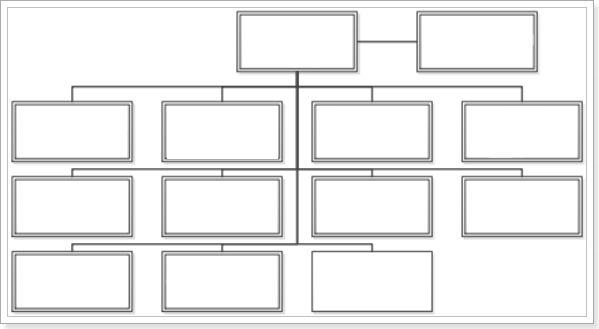
Human Resources
Succession Planning
Prepare the Right People for the Right Jobs, at the Right Time
Succession planning incorporates a wide range of Human Resource (HR) management functions, including recruitment, performance management and training and development.
Your HR partner is available to assist you with succession planning and help coordinate the process with your department and appropriate HR staff.
Succession Planning Guide (pdf)Three Composition of Succession Planning
-
Objectives of Succession Planning
- Determine pivotal positions
- Identify and prepare immediate backup to fill short-term vacancies in pivotal positions
- Develop viable internal candidates for future vacancies*
- Project future staffing needs and competency requirements based on institutional goals and workforce trends and predictions
- Identify obsolete or declining functions
- Develop promising leaders
What are pivotal positions?
Pivotal positions are critical to the success of a department—or CWU as an organization—because of specific strategies, process constraints, resources, or competitive differentiators.
While candidates must still compete for open positions through the search and selection process, internal candidates strengthen the candidate pool when they have benefited from training, experiential opportunities, and performance feedback.
-
Process Overview
- Review/update current organizational chart
- Consider departmental needs (current and near-term)
- Identify pivotal positions and/or incumbents
- Assess risk of turnover in pivotal positions
- Assess opportunities within current staffing
-
Step-by-Step process
The level of analysis necessary at each step of the succession planning process will differ among departments and by positions. Feel free to customize the process to suit your individual needs. HR is available to assist you and your management team throughout the process.
Review/Update Current Organizational Chart
A current organizational chart is the foundation to begin succession planning. Review your current department organizational chart and update as needed.

Consider Departmental Needs (Current and Near-Term)
Compare the knowledge, skills and abilities (KSAs) of your staff with both current needs and projected needs over the next two to three years. When assessing needs, think broadly about KSAs, including areas such as institutional knowledge, technical skills, and leadership ability.
You may find a gap analysis is useful at this phase to help identify what lies between where your department is and where you want it to be. A gap analysis is simply the process of considering what it will take to move from your current state to your desired future state.
Referring back to your organizational chart and focusing on the people in various positions may help you identify unmet needs. Consider the following: Are there projects you may not be able to move forward due to limitations of current staff time or skills?
What additional skills would enable you to better serve your customers?
Identify Pivotal Positions and/or Incumbents
Pivotal positions are those you consider critical to your area—either strategically, operationally or both. Evaluate who (staff or position) is key for performing and providing essential services and achieving business needs for your department.
Considerations
- You may choose to designate a position as pivotal because of the importance of the duties and responsibilities or because of the incumbent’s specialized KSAs.
- You may have multiple positions with the same title and determine some, but not all of the positions are pivotal based on particular incumbent qualities or future needs.
- If you decide not to designate a position as pivotal, it doesn’t mean you could or should eliminate that position. It simply means turnover in the position would not be overly disruptive to your area.
- Mark positions and/or incumbents you consider pivotal on a copy of your organizational chart.
Assess Risk of Turnover in Pivotal Positions
Use the Planning for Vacancy of Pivotal Position Form (pdf) as a tool to focus on each of the positions you designated as pivotal. The form will help you assess the risk and develop mitigation strategies, should the position become vacant. You will want to consider a number of factors, including:
- What is the operational effect of a vacancy in this position?
- What effect on leadership would a vacancy in this position create?
- Who is available as immediate, short-term backup for this position?
- Are there qualified internal candidates to fill the position on an ongoing basis?
- Based on workforce trends, what is the supply of qualified external candidates?
- How long would it take a replacement to become fully functional?
- How likely is the current incumbent to leave the position?
While anyone could leave unexpectedly, you can estimate likelihood, based on factors such as retirement eligibility or the incumbent’s desire for transfer or promotional opportunities. HR can provide information such as retirement eligibility, seniority, and tenure to help with your analysis.
Employees who do not currently possess the necessary KSAs to be successful in the position, but are identified as immediate backup or as potential candidates, will need development plans
Assess Opportunities Within Current Staffing
Beyond planning for vacancies in pivotal positions, you will want to assess and develop strategies for any unmet current or near-term needs you have identified. If adding positions to meet needs is not an option, you may want to assess opportunities to reorganize or retrain and reassign individuals.
When selecting potential candidates for current or future needs, consider incumbents in declining or less essential functions and/or those with high potential who are not challenged in their current position.Why consider internal promotions? Facilitating career development helps reduce or eliminate the need for talented employees to seek opportunities elsewhere. Retention and internal promotion preserve institutional knowledge and minimize disruption to operations.
While all employees should be supported to grow and develop, you may wish to identify candidates for immediate development in the following ways:
- Assess potential
- Assess current performance
- Consider motivation
Assess potential
Oftentimes, high performing employees are promoted to management positions that require a completely different skill set and mindset to be successful. A mismatch negatively impacts both the employee and the organization. Be sure to consider the differences between high potential (see questions below) and high performing employees.
Questions to help identify high potential employees:
- Does the person take charge and make things happen or sit back and let things happen before producing?
- Do obstacles stop the person? Or do they represent challenges, not threats?
- Does the person inspire confidence in his or her decision making?
- Can the person lead through persuasion and influence? Can he or she serve as an effective sounding board to others who are struggling with complex issues?
- Do others trust the person to lead projects and teams, even though he or she doesn’t have a leadership title?
- Can the person keep a high-level perspective? Are priorities apparent, or does she or he become mired in the details and tactics?
Assess current performance
Regularly observe employees and their work, review performance evaluations, and/or conduct a 360° assessment to gather feedback on an employee’s performance from various perspectives.
High potential/high performance
High potential/high performance people are highly promotable and should be included in the talent pool for pivotal positions. Aim to keep employee turnover low in this category.
High potential/poor performance
Finding ways to improve the performance of high potential/poor performance employees improves their potential for promotion. They should not be part of the talent pool for now, but may be promotable at a later stage.
Low potential/high performance
Keep people in the low potential/high performance category in their current position. Motivate them to maintain their performance.
Low potential/poor performance
Seek to improve the performance of people in the low potential/poor performance category
Consider motivation
Are potential candidates interested in advancing their careers? Are they committed to learning new skills? If employee aspirations do not match organizational goals, you may wish to consider other candidates. Ask yourself how you will nurture the leaders of the future without alienating fellow workers who may not meet the requirements for the top job. Is there an opportunity to develop multiple employees?
Integrate Action Plan with ePerformance Documents
In addition to clarifying expectations, ePerformance Documents provide the framework for setting goals to enhance employee knowledge, skills, and abilities—making employees better able to provide backup for other positions, and become qualified candidates for promotional opportunities. The goals on ePerformance documents for employees in your area should align with and support your succession plan.
Integrating your succession plan with employee ePerformance documents is essential. You may discover you also need training to enhance your skills (coaching and mentoring, and performance feedback) to facilitate the development of your staff. Reach out to your HR Partner if you need assistance creating ePerformance documents for your team.
The ePerformance documents should reflect the specific knowledge, skills, and abilities to be acquired or enhanced, which may include managerial, technical and/or department specific skills. The documents should also include specific timelines and methods for acquiring the stated knowledge, skills, and abilities. Methods may include job shadowing, stretch assignments, temporary job rotation, mentoring, and attending professional development courses through CWU or outside sources.
See performance management and training development.
If you would like help with Succession Planning, the Human Resources staff is happy to assist. Please contact your HR Partner who will coordinate the process with your department and appropriate HR staff.
CWU News

Latest edition of Voyage Magazine available online
April 24, 2024
by University Relations

CWU defensive standout presented with coveted national award
April 24, 2024
by David Leder